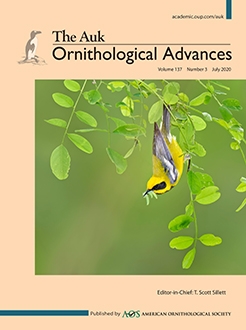Insectivorous birds reach their highest diversity in the tropics and represent a striking variety of morphological and behavioral specializations for foraging, yet explanations for these patterns are inadequate because of both our limited understanding of the drivers of ecological diversification within and among clades and of coexistence mechanisms in particular. Here we synthesize recent information on Neotropical insectivorous birds, including their diversity, evolutionary ages and locations of origin, phylogenies, and both competitive and predator–prey species interactions. We propose a novel evolutionary hypothesis for the origin and coexistence of the phenotypic diversity of insectivore foraging morphologies in species-rich communities, based on their extraordinary food-resource specializations. Specifically, we develop the Biotic Challenge Hypothesis to explain the evolution of these specializations, and we provide preliminary evidence in support of this hypothesis based on a synopsis of both Neotropical insectivore specializations by family and arthropod antipredator adaptations by category. We argue that, from the perspective of tropical insectivorous birds, and particularly in the most species-rich, mainland Neotropical communities, the environment is an arthropod desert. Coexistence with all of the other insectivores requires feeding specialization to compete exploitatively and diffusely against evolutionarily diverse species and far less frequently against sister species. The arthropod desert arises primarily because of (1) the tactical diversity of arthropod predators as insectivore competitors and (2) the evolutionary arms races involving arthropod predators with their prey, which render many arthropods inaccessible to most insectivorous predators. Our idea provides an explicit mechanism for pervasive, diffuse tropical interspecific competition, for evolutionary specialization, and for positive feedback on speciation rates at low latitudes, thereby generating new predictions and insights into tropical life histories and the Latitudinal Diversity Gradient. Other recent ideas concerning the coexistence of Neotropical insectivores, including positive species interactions within mixed species flocks, are recognized and evaluated. We discuss ways to test predictions resulting from the new view of communities developed here, including a case study of diet specialization by Costa Rican tyrannid flycatchers. Our synthesis of the origin and nature of Neotropical insectivore communities injects new life into the “zombie” idea that evolution works differently in the species-rich tropics.
LAY SUMMARY
New World tropical (Neotropical) insectivorous bird communities are extremely rich in species.
These birds are also extraordinarily diverse in how they forage, and illustrate a variety of specializations, but why?
This paper summarizes and integrates information on the evolution of the diverse Neotropical avifauna, interspecific competition, feeding specializations in the Neotropics, and arms races of insectivorous birds with insect prey, to make novel deductions and predictions.
Specifically, we propose the Biotic Challenge Hypothesis, which states that, from the perspective of many Neotropical insectivores, particularly those in lowland equatorial rainforests, food is relatively scarce, requiring specializations to find, capture, handle, and digest the prey, and requires energetic efficiency to compete effectively with other birds.
These ideas have a number of implications for life histories and for the evolution of the Latitudinal Diversity Gradient, that is, the tendency for more species to coexist at low latitudes. For example, we propose that the evolution of feeding specialization is traded off in these birds for strong dispersal ability, which has contributed to relatively high speciation rate in Neotropical birds.
The feeding specializations also have important implications for understanding a number of other aspects of Neotropical insectivorous birds, including their life histories, organization of mixed-species flocks, and their conservation vulnerability.





